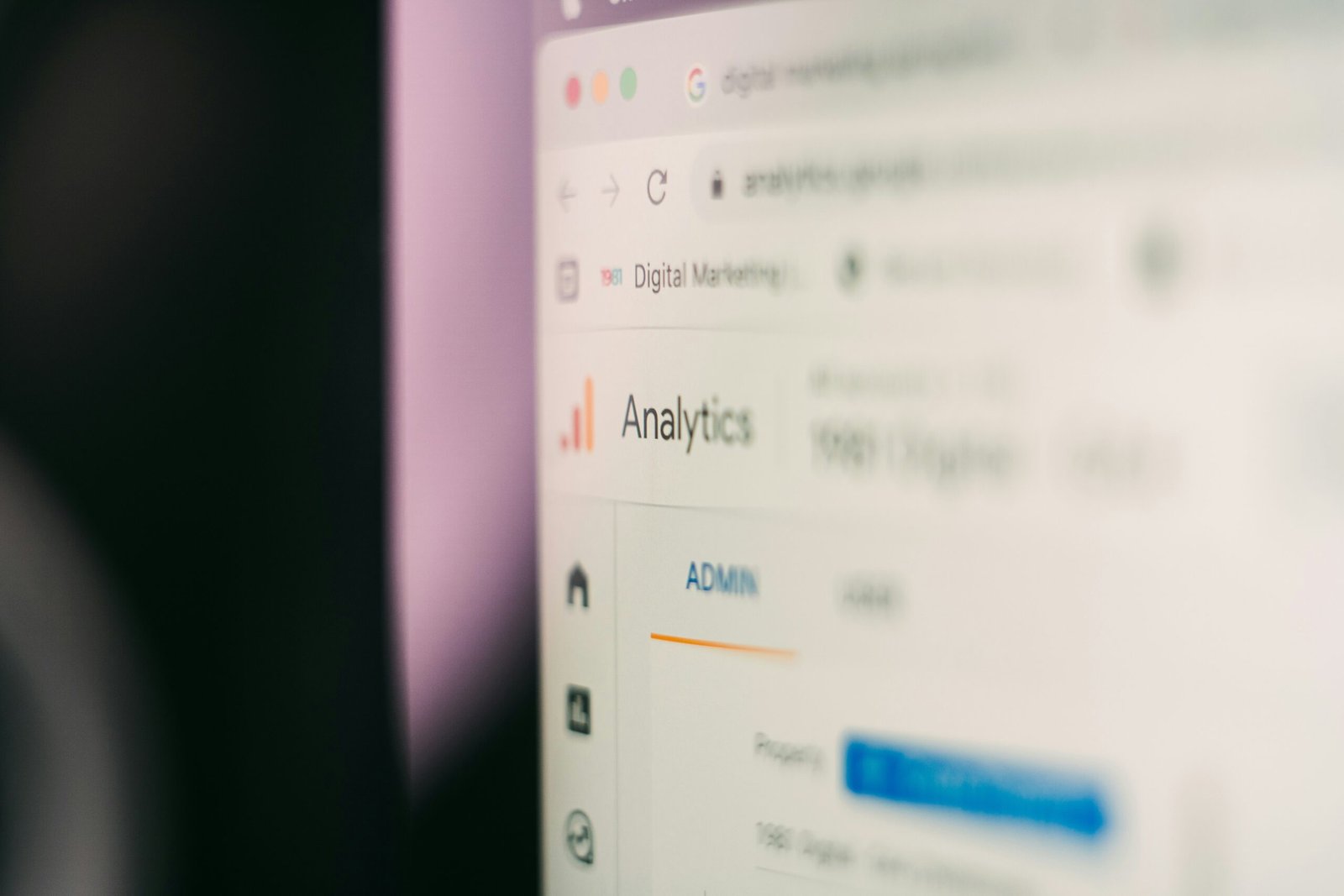Introduction to Fintech Email Marketing
Email marketing has evolved into a fundamental strategy for businesses across various sectors, including the rapidly growing fintech industry. Fintech email marketing involves the use of email campaigns to promote financial technology products and services, nurture leads, and retain customers. This method enables companies to communicate directly with their target audience, providing personalized content and valuable information that resonates with their specific financial needs.
<pthe a="" about="" address="" an="" and="" as="" available="" be="" becomes="" building="" by="" campaigns,="" can="" cannot="" challenges.="" clients="" companies="" competitive="" customers="" direct="" educate="" effective="" email="" engagement="" establish="" features="" financial="" fintech="" firms="" in="" increasingly="" individual="" information="" landscape,="" marketing="" navigate="" new="" of="" offer="" opportunity="" or="" overstated.="" p="" paramount.="" potential="" products,="" provides="" relationships="" sector="" services,="" share="" significance="" solutions="" sources="" support.
Moreover, email marketing plays a critical role in driving conversions for fintech businesses. By nurturing leads through the sales funnel with relevant content, companies can significantly enhance their conversion rates. Well-timed emails featuring enticing offers, educational resources, or strong calls to action encourage recipients to take the next step, whether that be signing up for a service or downloading a resource. The direct communication that email facilitates is also valuable for collecting feedback, enabling firms to refine their offerings and enhance customer satisfaction.
In conclusion, fintech email marketing is crucial for engaging customers, building lasting relationships, and maximizing conversions. A well-executed email marketing strategy can set companies apart in the fintech landscape, ensuring they remain relevant and responsive to their customers’ evolving financial needs.
Understanding the Benefits of Email Automation
Email automation stands as a transformative tool for fintech companies, offering a plethora of advantages that cater specifically to the fast-paced nature of the financial technology sector. First and foremost, automating email marketing processes significantly saves time. Rather than manually crafting and sending individual messages, automation allows businesses to schedule campaigns and distribute content to their target audience efficiently. This time-saving feature can be particularly crucial in a landscape where timely communication is vital for nurturing client relationships and responding to market changes.
Moreover, email automation greatly enhances the level of personalization achievable in communication with clients and prospects. By employing advanced segmentation and targeting strategies, fintech companies can tailor their messages according to consumer behavior, preferences, and demographics. This personalized approach not only improves engagement rates but also fosters a sense of connection and trust between the brand and its clientele. As customers receive relevant information that aligns closely with their needs, they are more likely to act favorably towards the brand, increasing the probability of conversions.
Additionally, automating email marketing increases overall operational efficiency. Businesses can utilize data analytics to monitor performance metrics consistently, allowing for incremental improvements to marketing strategies. Automation tools often facilitate A/B testing, enabling fintech firms to evaluate different messaging approaches and discern what resonates best with their audience. This strategic refinement ultimately leads to enhanced marketing ROI.
In conclusion, the integration of email automation is crucial for fintech companies aiming to streamline operations and drive growth. By saving time, enhancing personalization, and increasing operational efficiency, email automation empowers firms to optimize their resources effectively, paving the way for substantial business expansion in a competitive market.
Key Elements of an Effective Email Marketing Strategy
An effective email marketing strategy is pivotal for fintech companies seeking to engage their audience and drive growth. The first crucial element is defining target audiences. Understanding the demographic and psychographic profiles of potential customers allows marketing efforts to be more personalized and relevant. This step involves identifying the needs, preferences, and challenges of different customer segments, ensuring that the email content resonates with them on a deeper level.
Next, segmenting email lists is essential for delivering tailored messages. Segmentation can be based on a variety of factors, such as customer behavior, location, or previous interactions with the brand. By grouping subscribers into smaller, more specific lists, fintech marketers can create highly targeted campaigns that cater to the unique interests and needs of each segment. This approach not only increases engagement rates but also enhances customer satisfaction, as recipients are more likely to receive content that speaks directly to their circumstances.
Creating compelling content is another critical component of an effective strategy. The content should be informative, informative, and directly aligned with the interests of the fintech audience. This can include insights on market trends, tips for better financial management, or news about the latest industry developments. Enriching your emails with visuals and clear, concise messaging also improves readability and encourages action.
Finally, establishing clear calls-to-action (CTAs) is vital for guiding recipients towards the desired outcome, whether that is signing up for a webinar, downloading a white paper, or exploring a new fintech product. CTAs should be distinctly visible, compelling, and relevant to the content, significantly enhancing the likelihood of conversion. By focusing on these key elements—target audience definition, list segmentation, content creation, and strategic CTAs—fintech companies can build a robust email marketing strategy that drives growth and fosters customer loyalty.
Choosing the Right Email Marketing Automation Tools
In the fast-paced realm of fintech, selecting the appropriate email marketing automation tools is vital for optimizing customer engagement and driving growth. When embarking on this journey, understanding the key features that significantly impact functionality and user experience can lead to more effective email campaigns.
Firstly, analytics capabilities are an essential feature to consider. A robust email marketing automation tool should provide comprehensive analytics that not only tracks open and click-through rates but also allows for advanced segmentation and A/B testing. The insights garnered from these analytics can inform future marketing strategies, enabling continuous improvement and enhancement of email performance.
Moreover, the user interface of the tool plays a crucial role in its efficiency. A clean, intuitive design can reduce the learning curve, allowing teams to focus on crafting compelling content rather than navigating a complex system. The availability of templates and drag-and-drop features are additional factors that contribute to a streamlined user experience.
Integration with existing systems is another critical consideration. The chosen email automation platform should seamlessly connect with Customer Relationship Management (CRM) platforms, e-commerce solutions, and other marketing tools already in use by the fintech firm. This connectivity ensures that all customer data is synchronized, which is essential for personalized and targeted email marketing.
Finally, examining pricing models is important. Different platforms offer varying pricing structures—from pay-as-you-go to subscription models—tailored to the needs of organizations of all sizes. Hence, it is prudent to evaluate the budget while considering the platform’s features and scalability. Popular tools such as Mailchimp, HubSpot, and ActiveCampaign have demonstrated effectiveness in the fintech sector, offering a blend of functionality and user-friendliness.
Creating Customer Segments for Targeted Campaigns
In the realm of fintech email marketing, customer segmentation stands as a fundamental strategy that empowers businesses to communicate more effectively with their audiences. By categorizing customers based on certain criteria such as demographics, behaviors, and preferences, companies can tailor their marketing campaigns to suit different segments, ultimately enhancing the customer experience and driving engagement.
Demographic segmentation involves dividing your audience according to various attributes like age, gender, income level, and geographic location. For instance, if a fintech company offers investment options, they might target younger individuals seeking wealth-building strategies differently from older clients interested in retirement planning. Understanding the needs and goals of each demographic group allows businesses to craft personalized messages, increasing the likelihood of customer engagement.
Behavioral segmentation focuses on customer interactions with the business. This includes factors such as transaction history, product usage, and customer feedback. By analyzing these behaviors, companies can identify patterns that dictate specific preferences among their audience. For example, a customer who frequently engages with loan products may appreciate receiving tailored offers or tips related to credit management. Utilizing such insights yields campaigns that resonate more deeply with recipients, improving conversion rates and fostering loyalty.
Preferences and interests can further guide segmentation strategies. Utilizing questionnaires or examining engagement metrics can help gather insights into what content resonates most with different customer segments. When customers feel that the communication they receive is relevant to their interests, they are more likely to open emails and act on them.
Ultimately, effective customer segmentation in fintech email marketing allows businesses to deliver targeted campaigns that not only enhance engagement but also significantly bolster conversion rates, paving the way for sustained growth in this competitive landscape.
Designing Engaging Email Content
Effective email marketing in the fintech sector requires a deep understanding of audience preferences and behavior. One of the first elements to focus on is the subject line, which serves as the gateway to your content. To maximize open rates, craft subject lines that are clear, concise, and intriguing while maintaining relevance to the fintech industry. Utilizing numbers or questions can pique the interest of recipients. For example, “5 Tips to Save on Banking Fees” could effectively draw attention.
Moreover, as a significant number of email opens occur on mobile devices, designing mobile-friendly templates is paramount. A responsive design ensures that your emails look great on any screen size. Key aspects include utilizing larger fonts for readability, ensuring button sizes are easy for finger tapping, and maintaining a single column layout that simplifies scrolling. Testing your email layout across multiple devices can help in identifying areas that require adjustments.
Visual elements also play a critical role in engaging content. Incorporating relevant visuals such as infographics, charts, or videos can significantly enhance user experience and drive engagement. For the fintech audience, consider visualizing complex financial data succinctly to aid comprehension. This aligns well with the audience’s preference for easily digestible information.
Finally, understanding your audience is essential when crafting the email content itself. Tailor your messaging to address the specific needs and pain points of your fintech audience. Utilizing appropriate industry jargon can convey expertise; however, ensure that it does not alienate less knowledgeable recipients. Personalization efforts, such as segmenting your audience based on interests or behaviors, can also lead to more relevant content and improved click-through rates. By integrating these best practices, your email marketing campaigns can effectively resonate with your audience, driving growth within your fintech initiatives.
Setting Up Automated Email Campaigns
Automating email campaigns in the fintech sector is crucial for maximizing engagement and driving growth. The foundation of setting up automated email campaigns begins with understanding the customer journey. By mapping this journey, you can identify key touchpoints where communication can nurture leads and enhance customer experiences.
The first step is to create drip campaigns, which are a series of emails sent to subscribers at specific intervals. Drip campaigns can be tailored to various audiences, whether they are new leads or existing customers. Each email serves a purpose, guiding recipients from awareness to consideration and ultimately to decision-making. By providing valuable content at each stage, you can effectively build trust and encourage conversions.
Next, establish a template for welcome emails. This initial communication sets the tone for your relationship with new subscribers. A well-crafted welcome email should thank users for signing up, introduce your fintech services, and provide them with relevant resources. This can include links to the latest insights, tools, or guides related to finance, reinforcing the value your brand offers from the outset.
Follow-ups represent another essential element of automated email campaigns. After initial interactions, sending follow-up emails can significantly enhance engagement. These emails can inquire about a customer’s experience, invite feedback, or suggest further actions based on their engagement history. Consistent follow-ups keep your brand top-of-mind, fostering a connection that can lead to increased loyalty and retention.
Finally, develop comprehensive email sequences that serve specific purposes, such as promotional offers, product launches, or educational content tailored to user interests. These sequences should incorporate personalized messaging, allowing you to cater to individual preferences and behaviors. The integration of segmentation and targeted messaging ensures that your automated campaigns resonate with your audience, promoting higher open and click-through rates.
Measuring Success: Key Metrics to Track
Effective email marketing within the fintech sector hinges on the ability to measure success through various key performance metrics (KPIs). These metrics not only provide insight into the effectiveness of email campaigns but also guide adjustments for future strategies. Understanding and analyzing these indicators can enhance the overall performance of marketing efforts, driving growth and engagement.
One of the most fundamental metrics to monitor is the open rate, which measures the percentage of recipients who open an email compared to the total number delivered. A healthy open rate indicates that subject lines are engaging and relevant to the audience. In fintech, where trust and information are paramount, crafting compelling subject lines that resonate with potential clients is essential.
Another significant metric is the click-through rate (CTR), reflecting the percentage of recipients who clicked on a link within the email. This metric helps gauge the effectiveness of the email content and call-to-action (CTA). A high CTR often suggests that the content is not only relevant but also encourages readers to take action, whether it’s visiting a website or signing up for a newsletter.
Conversion rates are critical in evaluating the ultimate success of an email campaign. This metric measures the percentage of recipients who completed a desired action, such as filling out a form or making a transaction. Analyzing conversion rates helps identify which elements of an email campaign drive actual business results, enabling marketers to refine their strategies accordingly.
Lastly, return on investment (ROI) is perhaps the most telling metric for gauging the financial success of email initiatives. By comparing revenue generated against the costs of email campaigns, businesses can assess their overall profitability and make data-driven decisions to maximize growth. In conclusion, by regularly tracking these essential metrics—open rates, click-through rates, conversion rates, and ROI—fintech marketers can continuously improve their email marketing efforts, ensuring that they align with business objectives and customer expectations.
Conclusion and Next Steps
In today’s fast-paced digital landscape, fintech companies must leverage innovative strategies to maintain a competitive edge. Email marketing automation stands out as a crucial tool that can help organizations scale their marketing efforts efficiently, improve customer engagement, and ultimately drive business growth. Throughout this blog post, we have explored essential elements of effective email automation, from understanding customer behavior to personalizing content for different audience segments. Each of these components plays a vital role in ensuring that your email marketing campaigns resonate with recipients and yield satisfactory results.
To capitalize on the insights shared, fintech companies should take the following actionable steps. First, assess your current email marketing strategy and identify areas for improvement. This involves analyzing customer engagement metrics, reviewing campaign performance, and pinpointing opportunities for automation. Next, invest in an email marketing platform that suits your organization’s specific needs, ensuring that it integrates seamlessly with your existing systems and provides the necessary automation features. Such a platform will enable you to segment your audience, schedule campaigns, and track analytics effectively.
Additionally, prioritize the creation of tailored content that speaks to the unique challenges and interests of your audience. Automation can help deliver relevant messages at the right time, enhancing the recipient’s experience. Establish workflows that focus on nurturing leads, improving customer retention, and encouraging referrals. Don’t forget to continually test different strategies, as data-driven insights will inform your future campaigns and help refine your approach.
Finally, remember that email marketing is an ongoing journey. By staying updated on industry trends and continuously evolving your strategies, your fintech organization can harness the full potential of email automation. Embrace these practices today to unlock unprecedented growth opportunities.




